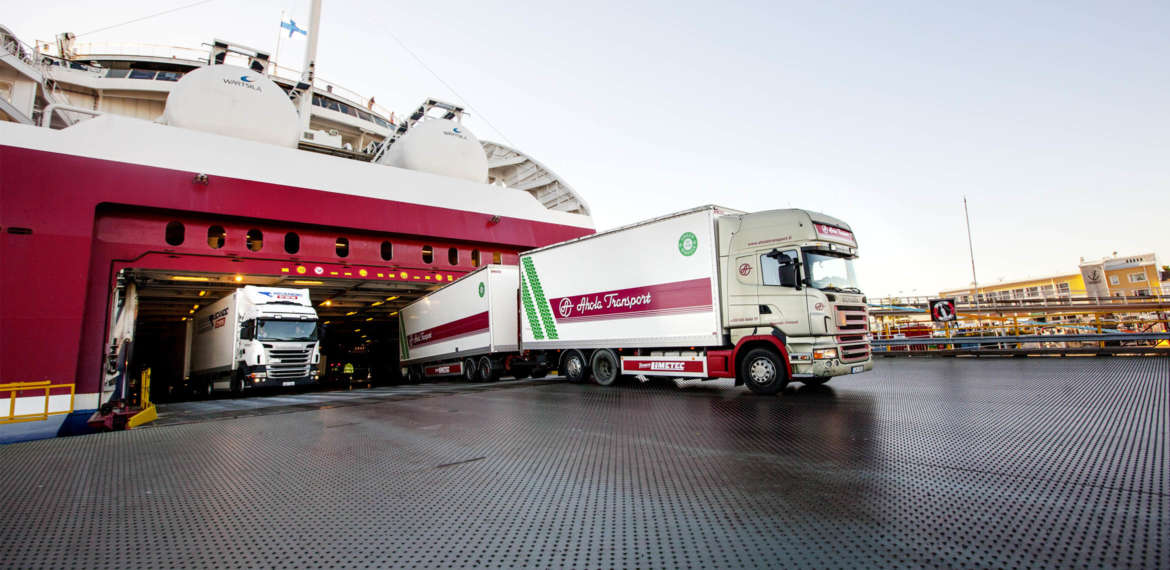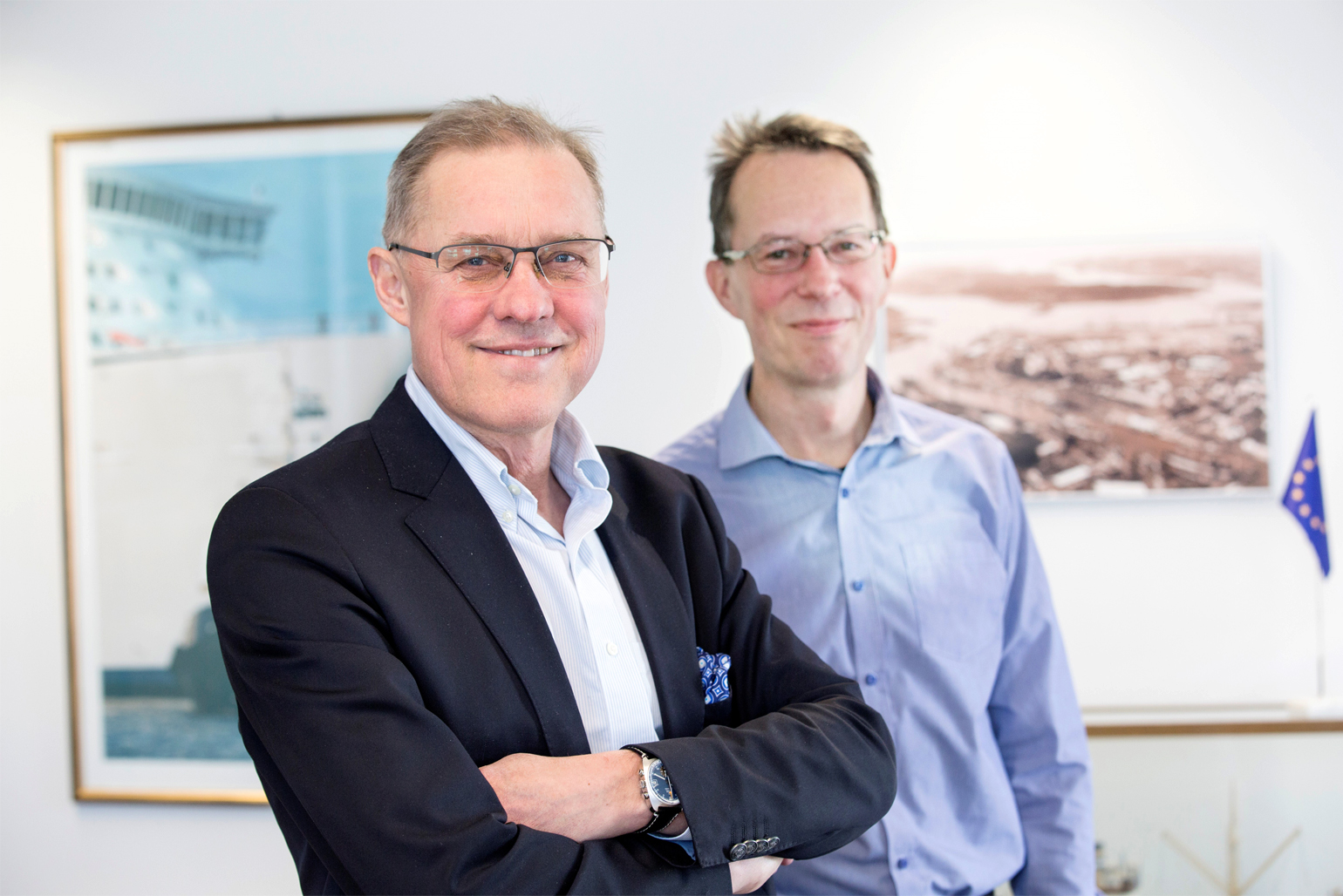Motorways of the seas must be maintained
As a result of the ongoing project the Port of Turku will get improved traffic and parking arrangements, more efficient embarkation of trucks, and an automatic mooring system for vessels which will be used by the new ferry ordered by Viking Line to be introduced at the beginning of 2021.

In addition to the Port of Turku, the NextGen Link project involves the ports of Mariehamn and Stockholm. Initiated by the Port of Turku, the project is linked to Viking Line’s order for a new vessel. The work related to the project will be completed in the ports by the end of 2020.
According to Christian Ramberg, Managing Director of the Port of Turku, the ports participating in the project are part of the Scandinavian–Mediterranean transport corridor that starts in Finland and passes through Sweden.
“To put it simply, it means that the EU favours projects that support certain transport corridors considered of primary importance, and we are part of one. It’s possible to get EU funding for projects that strengthen the corridors.”
Motorways of the seas
The project in question is the Motorways of the Seas (MoS) which in turn is part of the CEF (Connecting Europe Facility) network in which ports act as nodes of sea and land transports.
The requirements of the project include, for example, that investments are made both on land and at sea similarly. According to the rules there shall be at least two core ports located in two different EU countries.
According to Mr Ramberg, the Port of Turku saw a natural opportunity for a project which was made topical and confirmed by Viking Line’s purchase of a new vessel.
“Increase in cargo space as a result of the new vessel was an important factor. In addition, the decrease in emissions and attention to the archipelago environment affected the decision.”
Finland has to stay firm
Mr Ramberg says that Finland should more actively see to it that the country remains within the European transport system.

“If we don’t start projects like this, it’s not self-evident that the routes important to us will develop and remain prioritised in the future. There is fierce competition within the EU on which projects and routes and corridors are given priority in terms of development and investments.”
Mr Ramberg reminds that Sweden and Denmark have actively improved their land connections to Central Europe. The world’s longest rail and road tunnel under Fehrman Belt between Rodby in Denmark and Puttgarten in Germany is under construction. Due for completion in 2024, the tunnel is currently the biggest transport project in Europe. According to Mr Ramberg, the project will also benefit Finland in terms of logistics.
“In the future, we will have an even better land connection from Sweden to Central Europe. The Finns have to see to it that the motorway of the seas from Finland to Sweden is operational and competitive.”
The Port of Turku’s position as Finland’s number one connection to the other Nordic countries also needs to be looked after.
“That should be a shared goal in the economic region of Southwest Finland.”
Reforms bring fluent operating
Viking Line’s new vessel will be using the automatic mooring and unmooring system to be installed in the Port of Turku in which the vessel is attached to the quay with a kind of suction cups. Another major improvement will be implemented in loading trucks to a ship. The weighing, measuring and photographing of trucks will enhance safety and facilitate more efficient and balanced loading of a ship, which in turn will generate energy-efficiency.
According to Mr Ramberg, environmental benefits arise from small parts.
“If the automatic mooring system generates 10 minutes of time saving, that time can be spent in the archipelago, resulting in energy saving and reduced wave formation. As a vessel operates on 365 days a year, the total savings will be significant.”
The third important area of the project in the Port of Turku is the improvement of traffic and parking arrangements.
“I have to admit that our port is rather jammed especially on summer mornings and evenings. The passenger harbour is a point where taxis, buses, trains, traffic into ships and escorting traffic cross. The inner harbour area will be reorganised, which requires street arrangements.”
Parking in the Port will be concentrated to one multi-storey car park. It is not part of the EU project but will be financed and operated by the Port of Turku.
“It’s such an essential part of our operations that we want to keep it in our own hands”, Mr Ramberg says.
More space for trucks in the Port of Stockholm

The improvement work in the Stadsgården port in Stockholm within the NextGen Link project largely focus on expanding the outdoor field area and rearrangement of the embarkation of trucks.
“Our port area is located in urban Stockholm and is already crowded. The cargo capacity of Viking Line’s new vessel will be even higher, so we are making more room for cargo transports”, says Sandra Gegerfelt from Public Relations of the Ports of Stockholm.
“We will also introduce ITS (Intelligent Transport System) which is already being used in Värtahamnen and the port of Kapellskär.
Ms Gegerfelt promises that cargo transports will run much more smoothly than at present.
“With the digital system we can better guide the trucks to the right place on the outdoor field, which will make the loading process more efficient.”
According to Sandra Gegerfelt, regarding the Stadsgården port the project will be completed by the end of 2019.
![]()
Text Kalle Kirstilä
Photos Robert Seger
The Connecting Europe Facility (CEF)
- The Connecting Europe Facility (CEF) is a funding instrument within which the EU’s financial support is granted to European-wide networks to promote infrastructure projects in transports, energy and telecommunication.
- The transport budget for the financing period from 2014–2020 totals 26.250 billion euros, of which 11.305 billion euros is reserved for the cohesion countries. The subsidy percentage varies from 20–85% depending on the type of the project.
